Report / Global
Mucho gusto: Instituto Cervantes
Spain is doing an eloquent job of selling itself around the world by using its language to introduce people to its customs and culture. We meet the Madrid and Tokyo branches of the Instituto Cervantes’ global network.
There is no doormat with the words “Mi casa es tu casa” but the Instituto Cervantes saves its characteristically warm Spanish welcome for the inside. From Tangier to Tokyo, thousands of visitors pass through the cultural institution’s doors each day. They are lured here to brush up on their language skills, immerse themselves in a Spanish film or relish raw flamenco rhythms at a plethora of regular concerts. They may be thousands of kilometres away from Iberian soil but, for many, this is the first authentic taste of a country – and culture – that exudes colour and affability.
The institute is named after don of Spanish literature Miguel de Cervantes, author of the country’s 400-year-old classic Don Quixote. As it happens, the Spanish government had its own quixotic mission in mind when it opened the first one in Leeds in 1991. After decades of an insular dictatorship, the country was eager to reacquaint itself with the world. Building up a global network of cultural casas was embraced as a way to rekindle relations with the neighbours but also to celebrate the shared language, values and cultural assets that are spread across the Spanish-speaking world.
“Culture is a broad concept here,” says managing director José María Martínez Alonso from his wooden-panelled office in Madrid, home to the institute’s HQ. “This includes everything from football to gastronomy and the fine arts but the Spanish language is what forms the central pillar of this sweeping narrative.”
Promoting Spanish through an in-house language school and gold-standard curriculum has been the institute’s mission from the outset. It is spoken in 21 countries by almost half a billion native speakers so helping the rest of the world to roll its “r”s is as much about paving economic paths as it is honing a potent soft-power tool. The number of Spanish speakers is expected to grow to 750 million by 2050 – and 150 million of these are expected to call the US home. “Spanish is a language of dialogue between nations and we’re happy to host the conversation,” says Martínez Alonso. A presence in 43 countries certainly helps to get the world talking – and it also provides the perfect venue to host the odd fiesta.
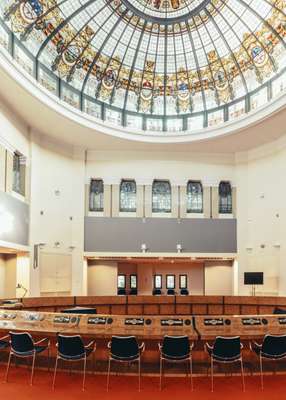

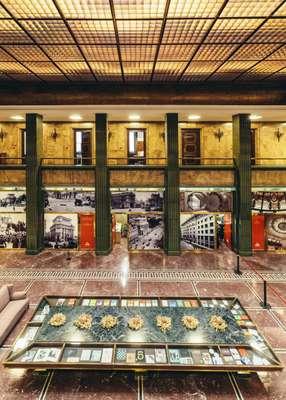
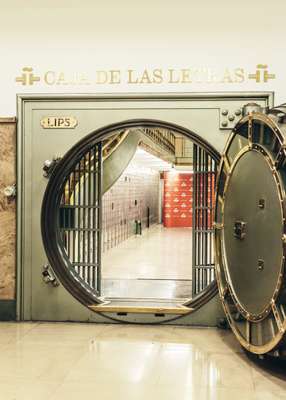

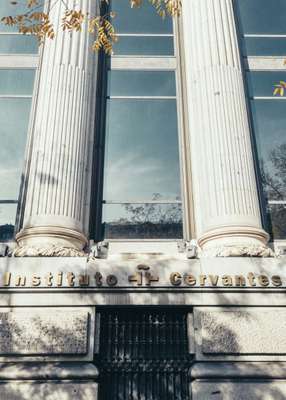



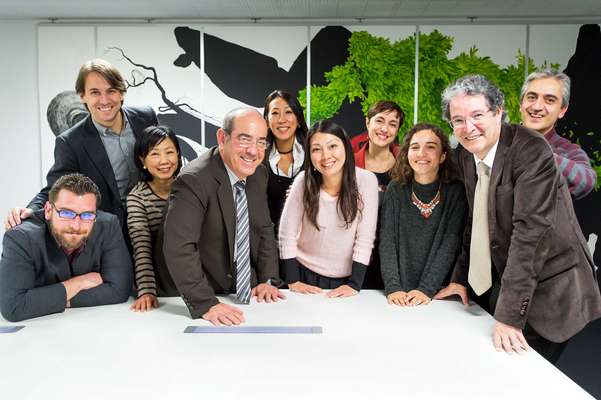


Adding to the allure is a worldwide cultural programme that boasts more than 5,000 annual activities. With a global infrastructure of buildings at their fingertips, the Spanish can make a song and dance about their national talent. Apart from regular concerts and fancy flamenco footwork, recent activities have ranged from young Spanish film-makers delighting Moroccan audiences in Tétouan to a popular fashion exhibition that brought Balenciaga and Manolo Blahnik to Beijing. In 2014, Spanish artist Antonio López Garcia even gave a three-week seminar in Paris; a blink of an eye for the snail-paced painter who is notorious for taking years to complete a work.
However, the Instituto Cervantes isn’t restricted to chest-thumping about the national treasure trove. Sharing the spotlight with Pedro Almodóvar and the odd Spanish architect are legions of leading cultural figures from Latin America. Nearly half of the cultural content harks from other Spanish-speaking countries, strengthening the institute’s standing as a global platform for Hispanic language and culture.
“Spanish is one of the most homogenous languages in the world,” says Alonso Martínez. “Only 5 per cent of the words spoken in Mexico City differ to those in Madrid.” This provides an advantage: while institutions such as the British Council compete with the US for linguistic supremacy, the Instituto Cervantes has established itself as a shared reference point by welcoming in other nations as partners. The message couldn’t be clearer: our common values, language and cultures make us stronger.
Although Spanish foreign minister José Manuel García-Margallo announced the closure of an Instituto Cervantes in Gibraltar last year (because “everyone there speaks Spanish except the monkeys”), new centres have been mooted for Washington, Luxembourg and Singapore, which is part of a push into North America and Asia. Already established is Tokyo’s Instituto Cervantes, where a diverse crowd of younger students and suited professionals are sitting down for their weekly language class. The native Spanish teacher is trying to explain the bewildering etiquette of how to greet a Spaniard. One or two kisses? Two, gracias. Handshake or hug? Handshake for the boardroom; hug once you’ve made it down to the bar. Is talking over someone acceptable? Not preferable but probably unavoidable.
Invaluable tips like these are imparted by friendly faced teachers who know just how important travailing the minefield of intercultural communication can be. Not too long ago Spanish prime minister Mariano Rajoy hammered home the point after offering a warm handshake without a deep bow when he met the Japanese emperor. Critics were incensed but other voices excused the faux pas as a quintessential Spanish act: friendly, informal and nonchalant, traits that are on full display under every Cervantes’ roof. Sounds good but can it last?
Back in Madrid, Martínez Alonso – a former teacher himself – says, “Teaching a language is not just a linguistic exercise: it’s about learning the customs and history behind it.” We pass through a busy department where a young team of experts are jabbing at keyboards as they tweak the next semester’s curriculum and upcoming language exams. “Part of their job is to incorporate the teaching of social nuances into the class work,” he adds.
In June last year the Spanish government corrected a five-century grievance with the Sephardic Jews. They were forced into exile during the Spanish Inquisition in 1492, so a law has now been passed that fast-tracks dual citizenship to their descendants. More than 4,000 applied for citizenship in the first few months but there was one catch: they would have to sit a short exam about Spanish culture and demonstrate basic knowledge of the language. The exam was, of course, designed and conducted by the Instituto Cervantes. And with such an impressive network of centres around the world, the Sephardic diaspora – most of whom live in Morocco, Turkey and Venezuela – didn’t have to travel far to sign up.
The days of the Spanish flotilla sailing the seas to etch out an empire may be long gone but modern Spain is redefining a new role as one nation among many. By welcoming people through its doors around the world, charming audiences and facilitating dialogue, Spain is not only securing its place at a lively table but also making sure that the table continues to grow. Centuries may have passed since Cervantes’ iconic rider muttered the words, “He who reads much and walks much, goes far and knows much,” but the Instituto that bears his name is ensuring that such wisdom is carried well into the next century.
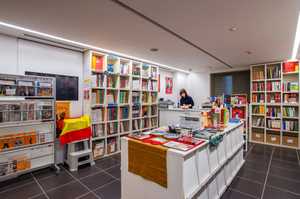
Loud and proud
- In numbers
Present in 43 countries
1,100 staff around the world
905 local collaborators
More than 5,000 activities each year
14,320 Spanish courses offered in 2014
222,810 enrolled students in 2014
370 concerts in 2014
60 libraries worldwide housing 1.3 million books - Key projects
The Japanese Flamenco Summit is a highlight, as is collaborating with film festivals. In 2015 Spain was the Country of Focus at the International Indian Film Festival. - Upcoming projects
The Instituto Cervantes’ 25th anniversary is in 2016; it also marks the 400th anniversary of the death of Miguel de Cervantes (“Spain’s Shakespeare”). Festivities are planned from Manchester to Manila. Plus, new centres are set to open in Washington, Luxembourg and Singapore. - Funding
Half of the Instituto Cervantes’ funding is public money; the rest stems from revenue collected from Spanish class enrolments and sponsorship from some of Spain’s multinationals.


